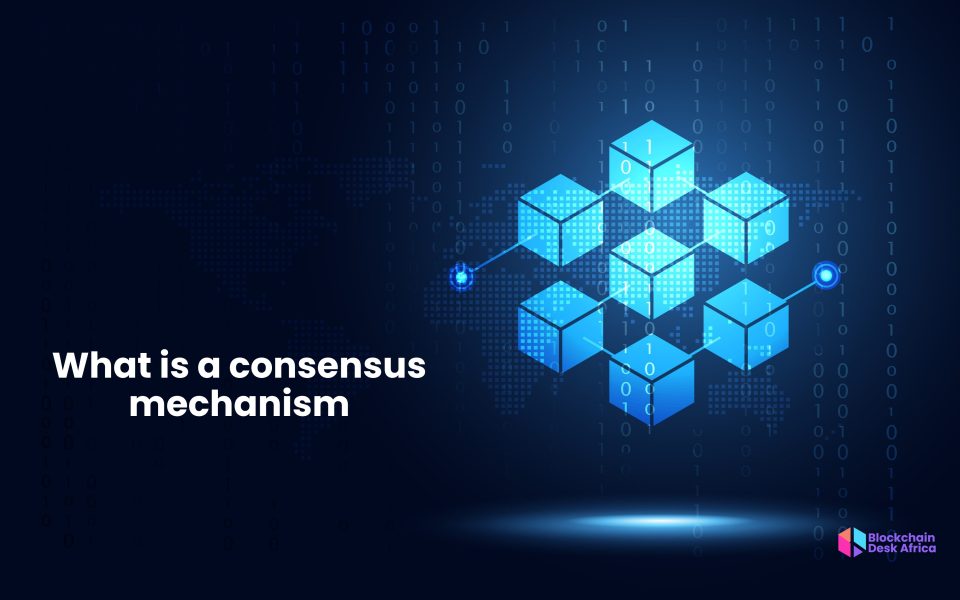In any distributed system, particularly one without a central authority, maintaining a consistent and reliable record of activity is both essential and complex. Blockchain technology addresses this challenge through consensus mechanisms, the foundational protocols that ensure agreement across all participants in a decentralised network.
What Exactly Is a Consensus Mechanism?
A consensus mechanism is a protocol, a set of rules that blockchain networks use to agree on the current state of the ledger (the complete record of all transactions).
Because blockchains are decentralised, meaning no single person or organisation is in charge, consensus mechanisms are essential. They ensure that everyone in the network sees the same version of the truth and can trust the data.
In simple terms, a consensus mechanism is how blockchains stay honest and operate smoothly, all without needing a central authority.
Without consensus, blockchain networks would descend into chaos. Imagine if anyone could rewrite transaction records, adding coins to their wallet or deleting someone else’s payment. Trust would vanish, and the system would collapse.
Consensus mechanisms prevent this by:
- Validating transactions before they’re added to the blockchain
- Making it difficult (or expensive) to cheat
- Rewarding honest behaviour through economic incentives
Common Types of Consensus Mechanisms
Let’s look at a few popular types of consensus mechanisms, each with its strengths and trade-offs.
1. Proof of Work (PoW) – The Original
This is the mechanism Bitcoin uses. In Proof of Work, miners compete to solve complex mathematical puzzles. The first to solve the puzzle earns the right to add the next block of transactions and receives a reward.
- Pros: Highly secure and thoroughly tested
- Cons: Energy-intensive and slower compared to newer methods
2. Proof of Stake (PoS) – The Greener Alternative
In Proof of Stake, there’s no need for energy-hungry computations. Instead, validators are chosen to add new blocks based on how many coins they “stake” — essentially locking them up as a guarantee of honest behaviour. The more you stake, the higher your chances of being selected.
- Pros: Energy-efficient and faster than PoW
- Used by: Ethereum 2.0, Cardano, Solana
3. Other Upcoming Mechanisms – Innovation in Progress
Blockchain is still evolving, and developers are experimenting with new consensus methods. Some notable ones include:
- Delegated Proof of Stake (DPoS) : Token holders vote to elect a small group of trusted validators
- Proof of Authority (PoA) : A few pre-approved nodes validate transactions, often used in private blockchains
- Proof of History (PoH): Used by Solana, PoH works by creating a historical record that proves events occurred in a specific sequence. It helps the network process thousands of transactions per second with high accuracy.
- Proof of Attention (PoA), The Engagement Model: Still experimental and often used in niche or Web3 content platforms, Proof of Attention rewards participants for genuinely engaging with content, for example, reading articles or watching videos. The longer and more authentically you engage, the more you’re rewarded. This model is being explored in blockchain-based advertising and media networks where user attention becomes a verifiable and valuable resource.
Each method balances trade-offs between speed, security, and decentralisation.
Consensus: Beyond Cryptocurrencies
While consensus mechanisms were pioneered in the world of cryptocurrency, their potential goes far beyond digital coins. They are being explored in:
- Supply chains – To track and verify the movement of goods
- Digital identity – To authenticate credentials without a central authority
- Voting systems – To enhance transparency and reduce fraud
In essence, consensus is not just about money; it’s about enabling trust in a digital, decentralised world.
Final Thoughts
Consensus mechanisms are the silent engines powering every blockchain. They allow people around the globe who’ve never met and may never meet to agree on a shared digital truth.
As blockchain technology continues to mature, so will the ways we achieve consensus. Future systems may combine the best of all worlds: energy efficiency, fairness, speed, and scalability.
In today’s increasingly digital and decentralised landscape, understanding consensus mechanisms isn’t just for developers or crypto enthusiasts. It’s for anyone interested in the future of trust, finance, governance, and the internet itself.
So the next time you hear that blockchain is “trustless,” remember it’s not about removing trust. It’s about creating shared trust without needing intermediaries. And consensus mechanisms make that possible.
Read also: What are Smart Contracts and How do they Work?
